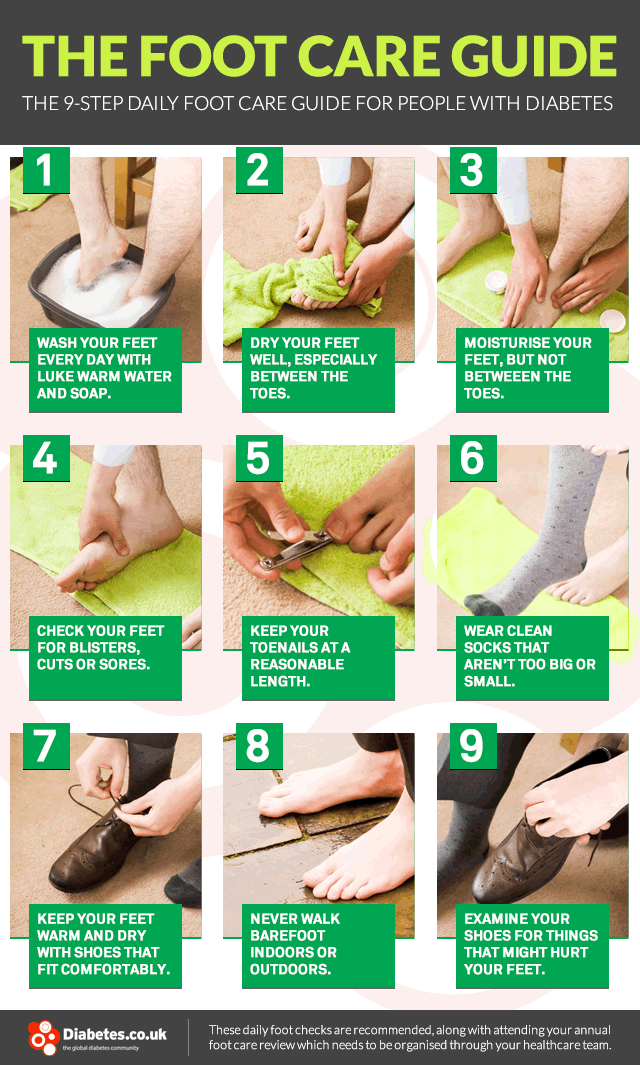Foot care amongst diabetics is incredibly important as foot related complications are more common for those of us with diabetes.
Foot ulcers for example, which affect as many as 1 out of 10 people with diabetes, can all to easily develop from blisters and small wounds to posing a threat of amputation.
Even small ulcers on the foot can represent a serious risk: they may heal extremely slowly and need rigorous treatment to cure.
Ulcers can develop into serious lower body infections, with the possibility of amputation at an advanced stage.
Caring for your feet
Caring for your feet as a diabetic should not be difficult, and should be a prime consideration.
This section details complications that may affect the diabetic foot, and some methods and information about care.
Why is foot care important?
The presence of high blood glucose levels over a long period of time may result in a condition called diabetic neuropathy (damage to the nerves) or loss of circulation in the extremities of the body.
If the nerves in your feet or legs are damaged, your feet can lose sensation and become numb.
It is relatively common for people with diabetes to not feel foot problems until they have developed, therefore it is key to ensure you have regular foot examinations
Diabetic foot complications include:
- Foot ulcers – open wounds on the foot
- Charcot foot – deformation of the foot
- Amputation
Caring for your feet
Foot care involves reducing damage from occurring to your feet and regularly checking your feet for any signs of damage.
Damage to your feet can be reduced by avoiding walking barefoot, wearing correctly fitting footwear and keeping your feet clean and in good condition. Check your feet every day for any signs of damage.
Checking your feet
You should regularly examine your own feet for signs of damage. This is all the more important if you are suffering from poor circulation and numbness. If you have trouble checking your own feet, you may need to ask someone to help you check them.
Look out for any of the following signs of foot damage:
- Cuts
- Bruising
- Swelling
- Grazes
- Sores
- Changes in colour
- Ulceration
- Hard skin
Also be aware of any cracking from dry skin as this could develop into an ulcer over time.
Foot examinations on the NHS
It is important that you receive a regular check-up from a health professional at least once each year. If you have signs of neuropathy and/or poor blood circulation, you may need to have a foot examination more often.
At a foot examination, your feet will be checked for:
- Signs of neuropathy or development of neuropathy
- Blood circulation
- Any signs of damage
Read more on foot examinations
Manage your diabetes
Controlling your diabetes with an appropriate treatment regimen, healthy diet and lifestyle, and regular exercise will help to reduce the chances of suffering from foot complications.
Products for the diabetic foot
Several companies make specific products for the diabetic foot. Calluses must be removed regularly by a podiatrist or other specialist. The wound should be cleaned and dressed, protected by the bandage but allowed to breathe.
In more severe cases, it may be necessary to wear an orthowedge: a special shoe designed to alleviate pressure on the front of the foot.

Further treatment may include the application of a contact cast, heavily padded inside to reduce pressure on the foot.



